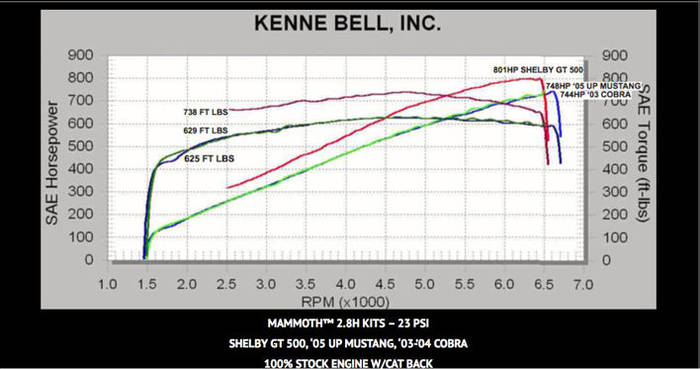Quote:
Originally Posted by Selo

I'm ... surprised that no one really commented on the coyote as a desirable option...
|
Any small displacement engine (unless supercharged) will make it's horsepower with high engine speeds and low torque. Torque is what makes a car move when you initially push on the accelerator pedal.
If you intend to use a low torque engine and make your power with engine speed you will always be driving around town above 3000 rpm in traffic — and that gets old fast not to mention expensive.
This is a link (click here =>
Westech Dyno test) of a dyno pull of a 427 Windsor at Westech. Notice the engine has over 500 ft/lbs of torque even down below 4000 rpm. This is what moves a car around town and in traffic when you push on the accelerator.
This is a link (click here =>
Hot Rod Coyote Dyno Test) to a Coyote dyno pull writeup by Hot Rod.and here is the Dyno chart for the engine;

Notice how the engine torque falls to 375 ft/lbs at 3000 rpm. When you take the engine down to 1500 / 2000 rpm (which is where you'll be driving it) it has even wimpier torque numbers — it will feel like the engine you have today that you want to replace. The only difference is your wallet will be a
lot lighter. BTW FWIW it took E-85 and add ons to get those disappointing numbers.
The only way to fix the wimpy torque problem is displacement, you need to have 427 or more cubic inches of engine displacement, which is exactly what the Westech dyno pull showed.
There is one other fix for the problem and that is supercharging, which is in effect more inches but on demand.. When you supercharge a good basic design like Ford's 4 valve Modular family motors the result is stunning.
This is a series of dyno pulls from Kenne Bell showing what their superchargers are capable of on this engine platform. Notice all the numbers are on bone stock engines except for the KB compressor.

Even the diminutive 4.6L engine (that I use) produced 500 ft/lbs of torque at 2000 engine rpm and the torque was essentially table flat across the entire engine operating range. The other significant consideration is the figures are rear wheel torque and power figures not flywheel — add another 15% more power for the flywheel figures.
Those diminutive (diaplacement-wise) supercharged 4V Modular engines will slam your eyeballs against the back of your skull, if you hook them up. Ask me how I know. If you are a purist they are not period correct. If you are into eye candy and stunning performance they are just what the doctor ordered but on steroids. They do come from an OEM Cobra so the gene pool is sort of correct ...
Bottom line you are back to needing displacement, either a 427 or bigger n/a engine or a small displacement engine with a screw blower.
You ought to also spend $150 on those books I pointed you at. It is much less expensive than a $15,000 engine mistake but it will require you to actually read and learn the stuff in them.
Ed